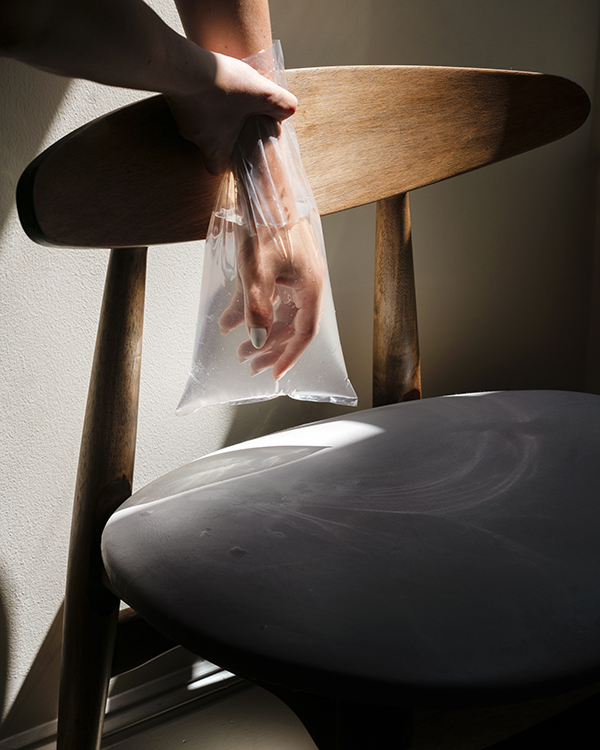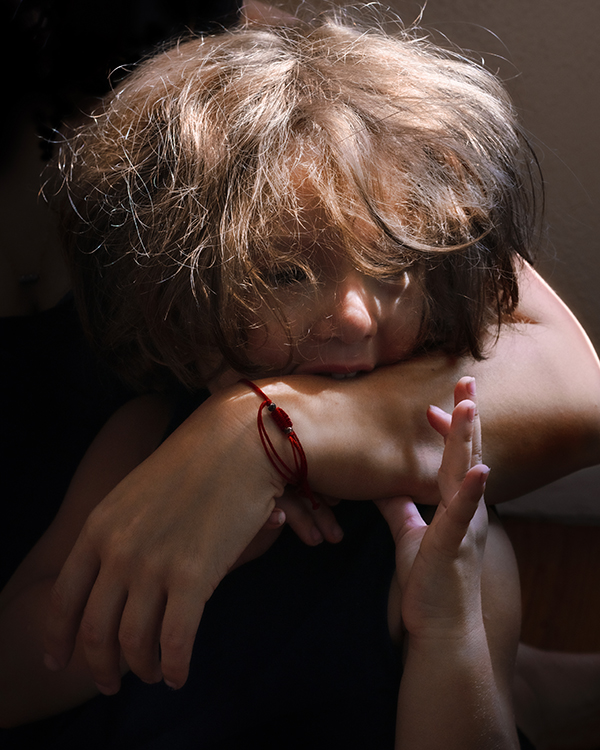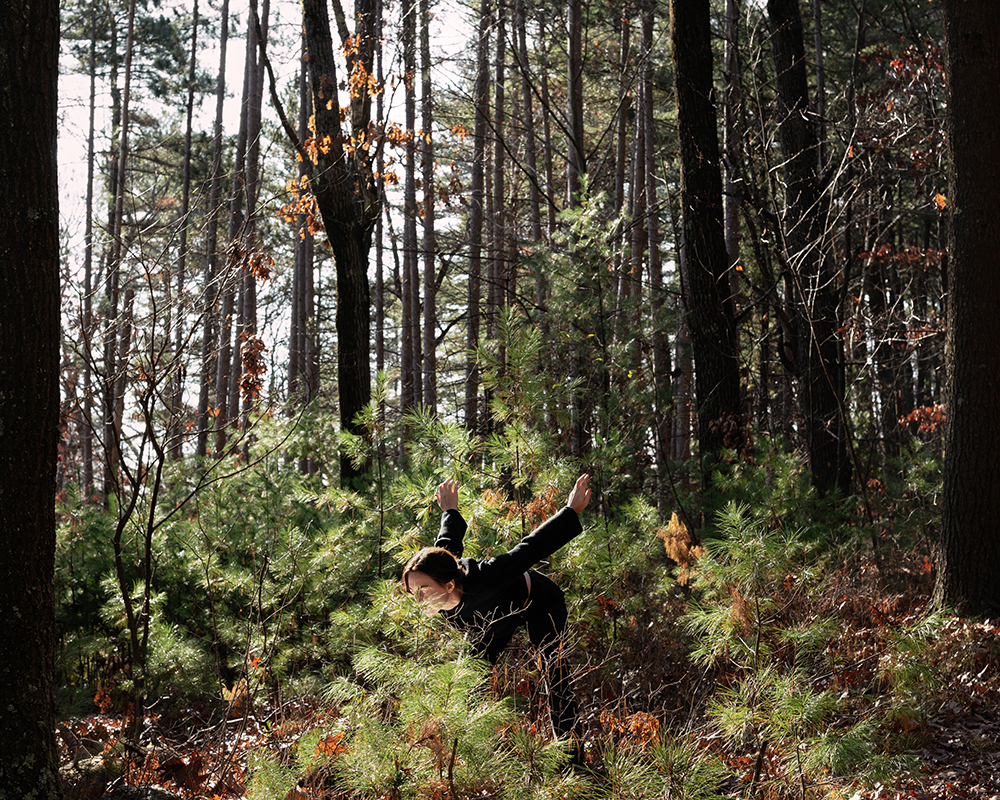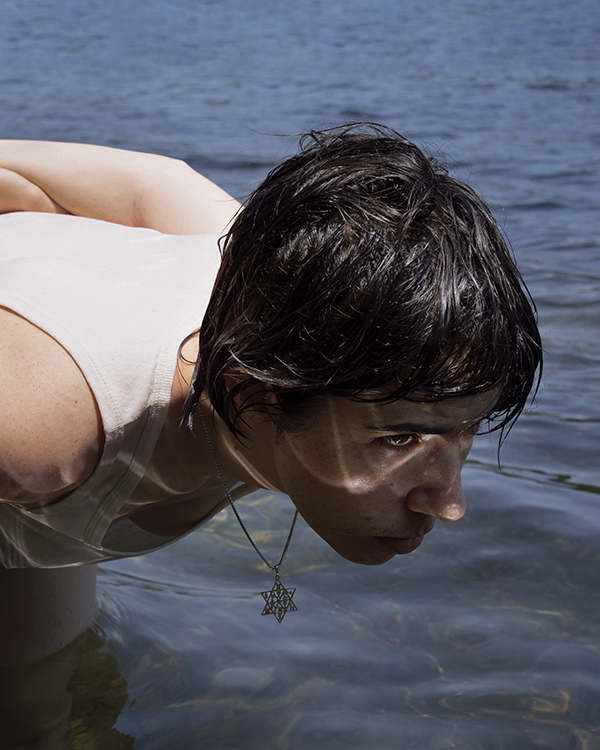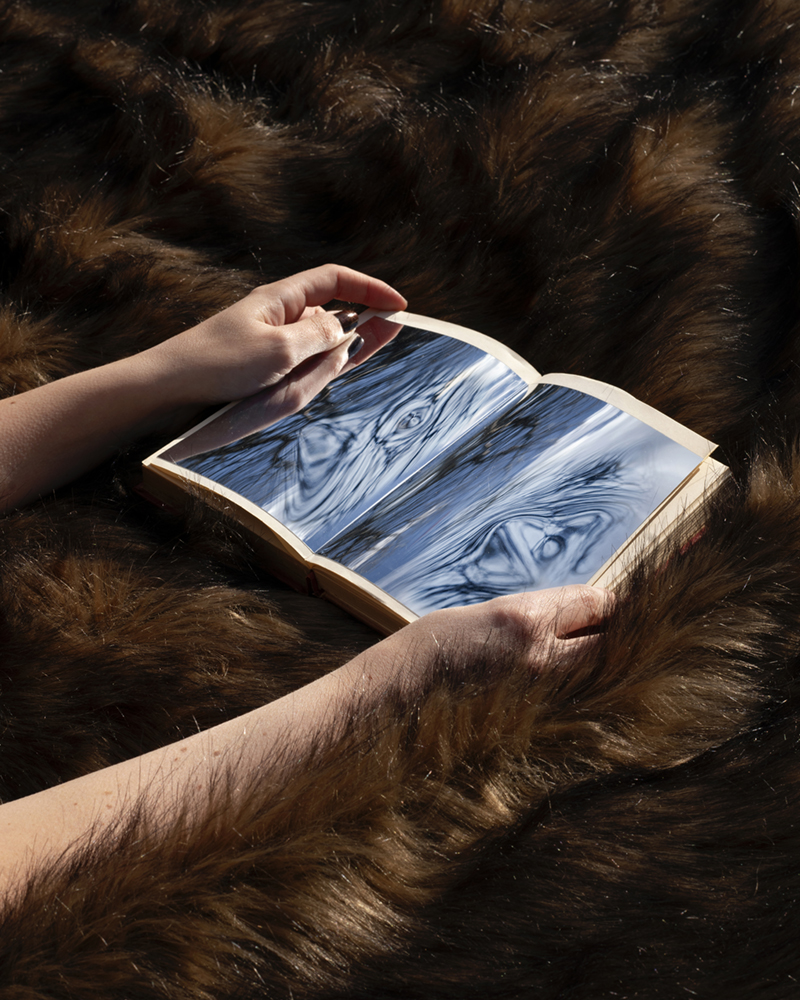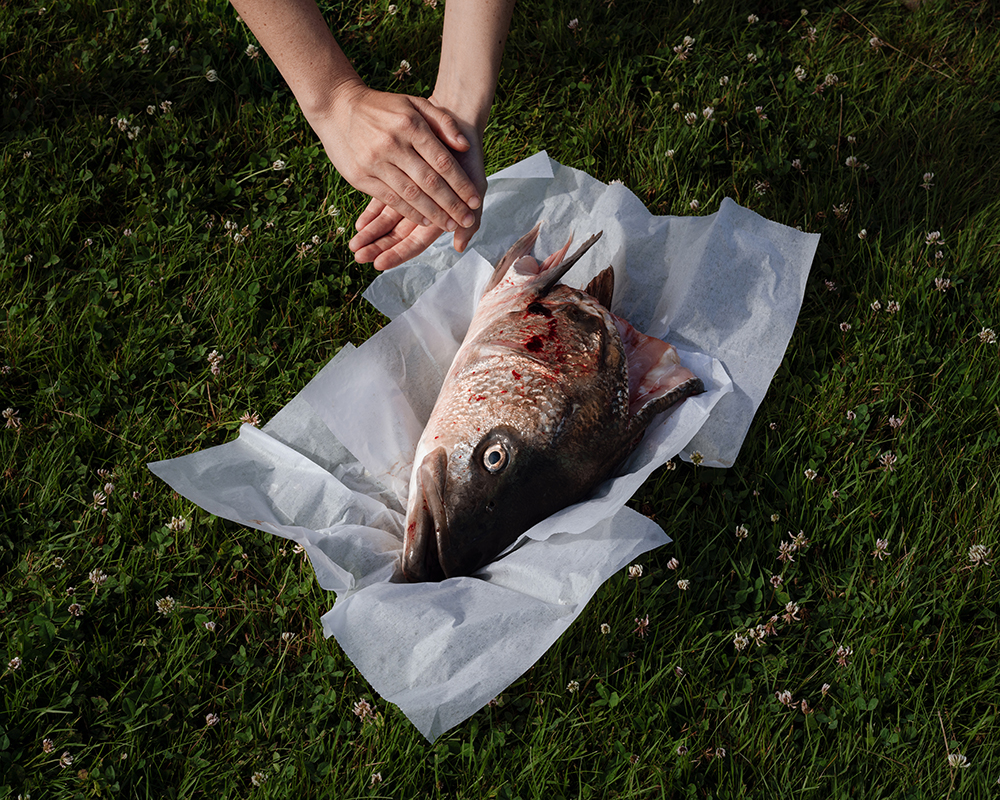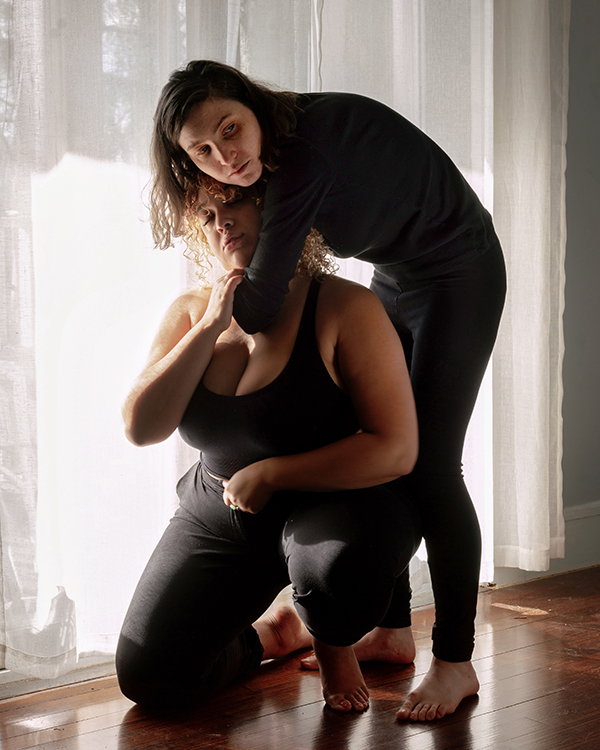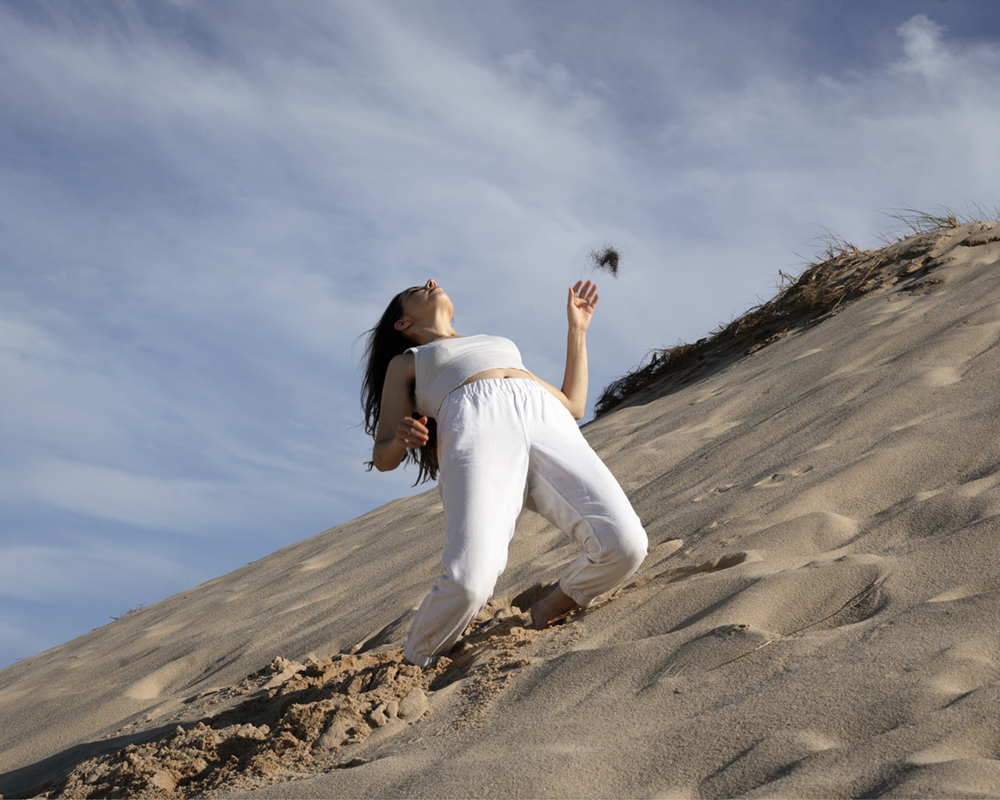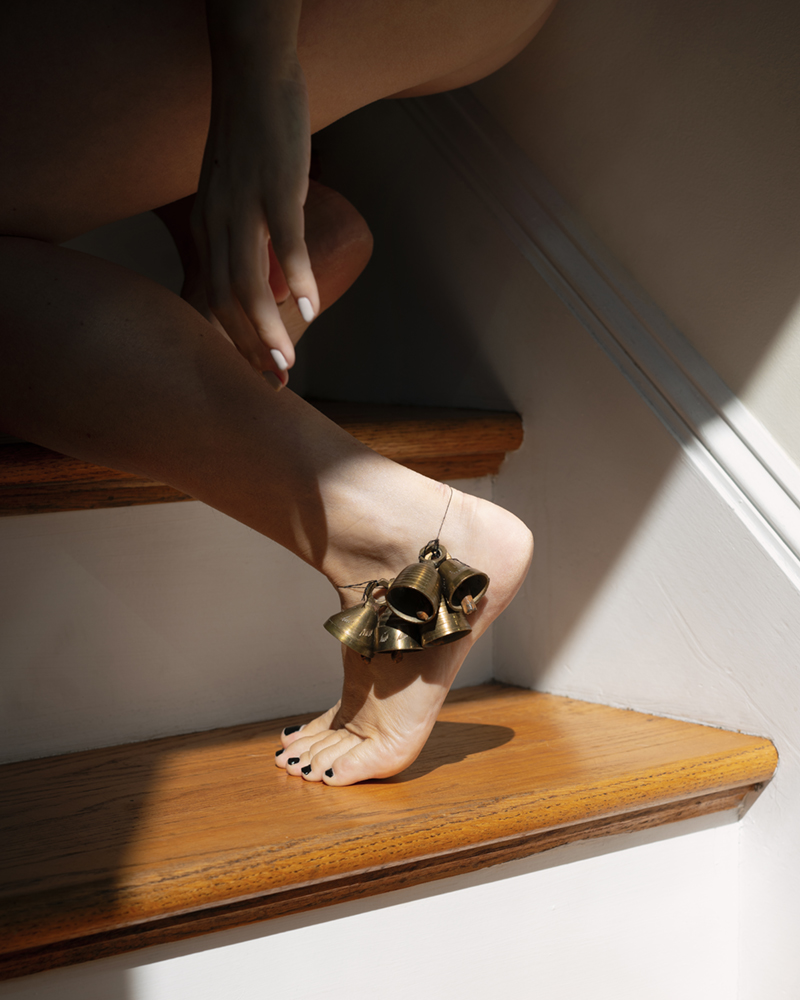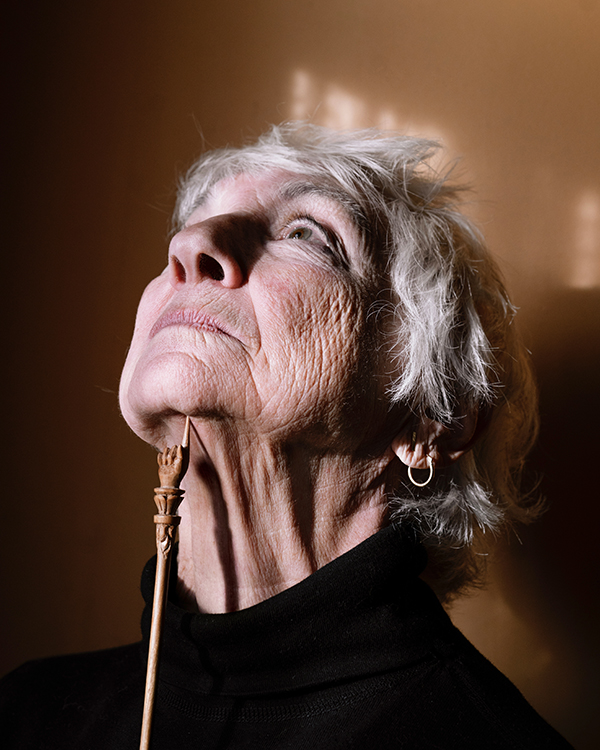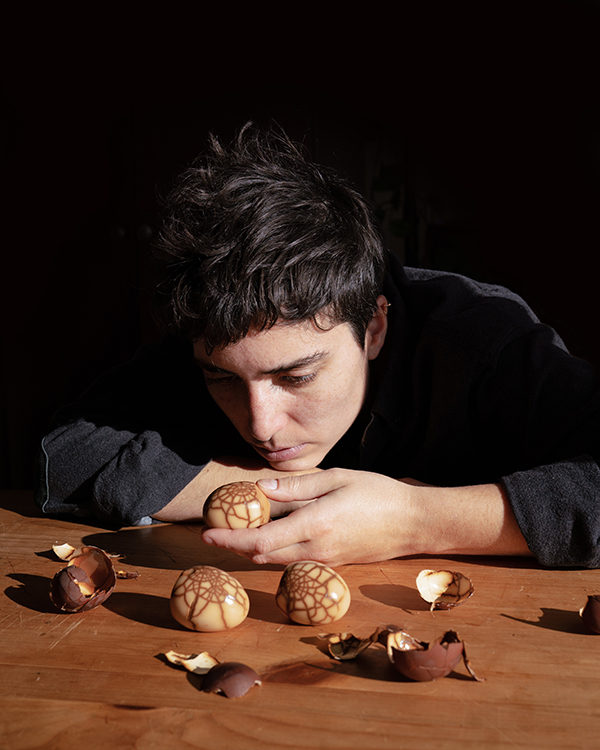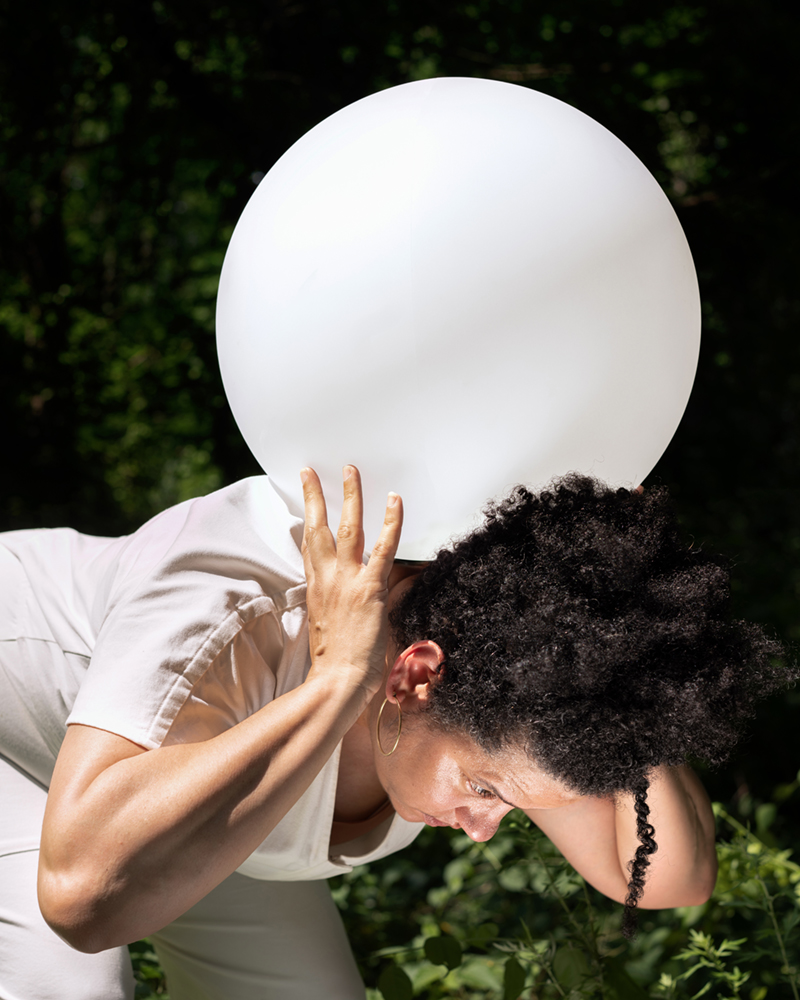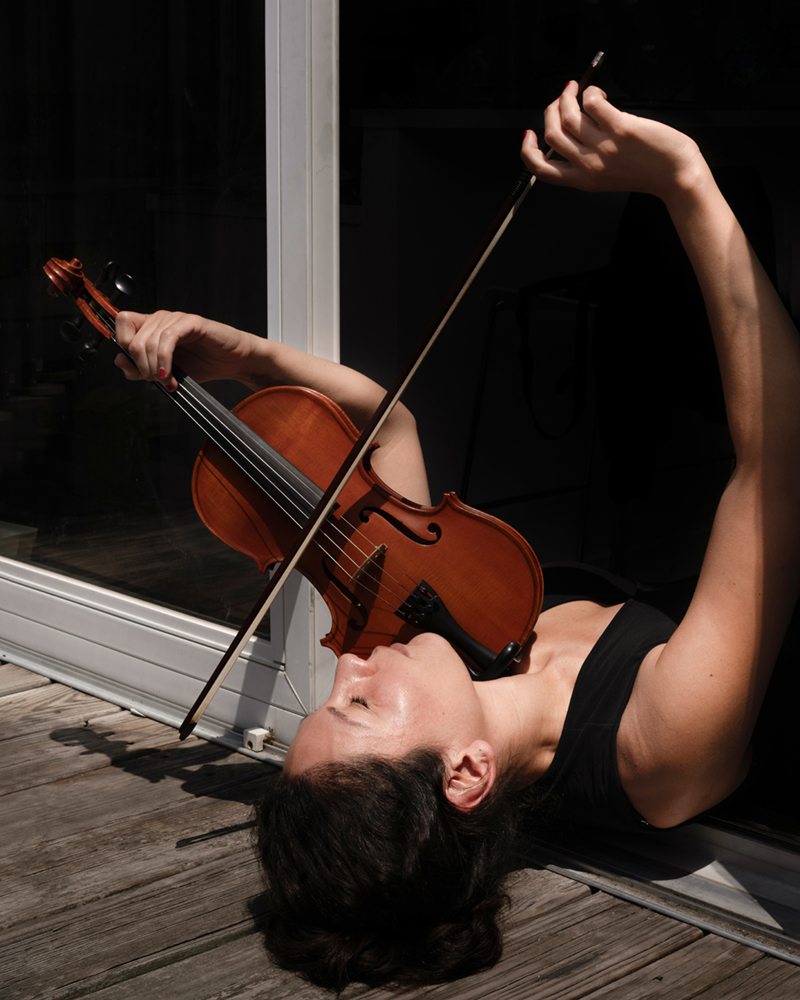Hannah Altman: We Will Return to You
I remember very clearly the first time I saw Hannah Altman’s work. It was January 2020 and she was profiled on Strange Fire Collective. My response to her photos was electric. Of course, part of that was because she is a master image maker, but more than that I felt at home in her work. Her world was a world I had lived in, though we had never met. We had interacted from afar for months when I messaged her and asked if we could do a coffee over Zoom. It was the first year of the pandemic and everything felt distant. But, as with my immediate response to Hannah’s work, I felt an immediate connection to Hannah.
Hannah works with Jewish modes of storytelling and, as we discuss in the interview, these stories are historically written and oral. But she reaches beyond and between the words, to the breaths and the spaces and the things we don’t even know how to say, and brings them to earth through her camera. She’s a sharp, deep thinker and questioner and an intuitive and poetic maker.
I never tire of talking with Hannah. In the three years since we first spoke, she’s become a dear friend and a constant collaborator. My respect for her and her work grows the closer I get.
Altman recently opened the exhibition, We Will Return to You, at Abacus Projects in Boston, and it will run through October 29th, 2023.
An interview with the artist follows.
Hannah Altman is a Jewish-American artist from New Jersey and based in Boston. She holds an MFA from Virginia Commonwealth University. Her photographs portray lineage, folklore, memory, and narrative.
Her work has been extensively exhibited nationally and internationally, and has been published by the New York Times, Vanity Fair, Artforum, and British Journal of Photography, among others. Her photobook Kavana (2020), published by Kris Graves Projects, is housed in notable permanent collections including the MoMa Library and the Metropolitan Museum of Art Thomas J Watson Library.
She was a Critical Mass finalist in 2020, received the Lensculture Critics’ Choice Award and was included in the Silver Eye Center for Photography Silver List in 2021, became the inaugural Blanksteen Artist in Residence at the Slifka Center for Jewish Life at Yale in 2022, and was selected as an Aperture Portfolio Prize Finalist in 2023
Instagram: @hannahaltman
We Will Return to You
Surrounded by environmental, human, and divine obstacles, Jews have shaped their folklore in order to make sense of their surroundings and transfer their memory. The images in We Will Return to You mirrors the ways that these stories are shared across generations by exploring lineage and storytelling through photographic narratives based in Jewish folkloric motif.
Embodied as multi-faced tales, the photographs consider the presence of tension, unease, and potency within Jewish mythos. The bright world within the images is fogged over by the hot breath of upheaval. The bodily performance of texts becomes a throughline that forms the photographic spine of Jewish storytelling.
Through images that explore Jewish narrative structures, iconography, and repetition, the photographs build worlds that are sowed from a turbulent past and grow outwards towards the rumbling world to come.
Hello Hannah! As always, I am thrilled to be talking to you and am particularly thrilled to be talking about your upcoming solo show We Will Return to You, on view from October 6 – 29th, 2023 at Abakus Projects in Boston, MA.
You and I spend a lot of time discussing the landscape of Jewish photography and the things people come to expect visually when they hear the term “Jewish photographic project.”
Your work resists typical visual histories and categories and rather focuses on translating modes of Jewish storytelling that are typically oral into photographs. I’d love to hear you talk about that process and choice.
So great to be in conversation with you, Anne! I agree that my work tends to dwell in a thick forest with multiple paths to engaging with the images. I look to Jewish folklore, which largely persists through oral performance and written text, and apply the narrative techniques I find in these sites of storytelling into photographs. The photographs that come from this mode of making both feel rooted in something timeless and intangible and build new narratives through their imagery.
Rather than attempt to copy a written plot and directly paste it into a photograph, my work more broadly asks: how do Jews tell stories? How do we structure the themes, anxieties, and messages that we so fervently want to remember for generations to come? And further, what do these structures look like when applied to image-making? These questions frame and drive my practice; being both a Jew and a photographer, I am haunted by marking time and carrying it forward.
Yes! I love this comparison you are pulling between both Jews and photographers being “haunted by marking time”. Despite the fact that Jewish stories are primarily verbal, photography as a medium feels well positioned to be used to tell Jewish stories. Can you expand upon this connection between your relationship with Jewishness and photography as a medium?
There’s a lot of overlap between these two practices for me, namely through their pillars of time and memory. Both traditions are punctuated by preserving histories to build reference points for the future.
Jewish practice does so by repeating cyclical and ethereal narratives through text and ritual. Remembrance is performed by the body and through objects, and at times the source is distant yet distinct, having reverberated through the generations over thousands of years. In photographs, however, the bruise of remembrance is visible on the skin. For both the maker and viewer, the contemporary photograph feels tangible and immediate. It takes place in a nearby time.
To make work that intertwines these modes of storytelling creates images that are rooted in Jewish folklore and build a sort of timeless, self-perpetuating world. I’m very drawn to that landscape.
Something I admire about your work is your world building. The world you build is anxious, and, as you said, “timeless and self perpetuating”. Your photographs give entry points for any viewer to feel themself in the landscape, but the work is still rooted in Jewish experience. I see you do this so successfully through your use of Jewish symbols as visual grounding devices- the Magen David most obviously but then also less known symbols like the yad and the fish head. Could you talk about how you collect these symbols and how you decide how they will show up in the work?
I’m glad this aspect of the work translates into access points. Though we’ve been talking about the ethereal, there’s a concrete element to iconography that grounds the work in Jewish identity and expands the usage of the motif. I try to engage symbols in such a way that if the background is understood, it adds a layer of meaning, but if the reference is a mystery, it still reads as a springboard for inventing visual narratives.
Its Tale in Its Mouth (Clapping) is a good example of this. A read of the image with little to no context might lead the viewer towards a scene of a severed fish head with a pair of hands clapping over it, mimicking the sound a fish tail would make if it were alive. In this sense, human intervention and perpetuation is what helps the memory of the fish live on.
This read would ground the work in a strong sense of Jewish thinking on its own, but more facets of meaning are cut with the knowledge that fish have ritual and mystical uses; a fish head is found on some Rosh Hashanah (new year) tables so that we are the “head and not the tail” during the coming year. Spiritually, fish are shielded from the evil eye if they remain under water, and their eyes are always open, embodying Hashem’s protective gaze. Such additional context makes the image more lush and creates more opportunities for narratives, but does not rely on itself for meaning.
Both reads feel flush and true, and walking that line between specificity and openness is central to creating the environment that the work lives in.
The way you’re describing your use of symbols makes me think of your casting of characters within the photos. While sometimes people portray a part of themselves, a ritual that’s important to them, or an individual skill, mostly they embody something less personal. Even a photo like “A Story that Changes Depending on Who Shares It”, which could be a portrait specific to its sitters, becomes more open in the context of the show.
The figures in your photos embody larger Jewish themes, feelings, archetypes, gestures. As with your use of symbols, you create layers of entry for viewers, each full and complete.
How do you go about “casting” your work? How do you know when you want to make a photograph with someone?
The portraits in my work range from my own body, which (presumably) I know very intimately, to people I meet for the first time an hour before photographing them. Most often it’s the webbing of my network; family, friends, friends of friends. I often keep ideas of what might make an interesting image in my pocket for months, until the right person is in the right light. There are certainly aspects of participants’ Jewishness that draw me to make work with them, but the thread through the portraits is that they are not particularly rendered as an absolute representation of an individual. Rather, the portrait is a means to explore the mobile yet buoyant underpinnings of Jewish storytelling. I tend to connect with participants who are interested in engaging with a Jewish facet of themselves (be it through ritual, object, story, environment, movement, etc.), and are excited by the photograph’s role in building characters and narratives from that facet. I think this approach allows a body of work like this, which could otherwise fall into ethnographic work, to expand into something more open and poetic.
Your point about how your approach takes the work out of the ethnographic realm and into something more poetic is so important. This is a struggle, I feel, for a lot of people making work related to our marginalized identities. Speaking from personal experience, I know there’s an impulse for the work to be viewed as categorizing or documenting, when (at least for you and for me) it’s less about identity and more because. It’s something I love about your work; you center Jewish question asking, Jewish imagination, Jewish knowing and unknowing.
Let’s talk about your research process for this work. Do you find there’s a difference in how you approach textual research and visual research?
I tend to be excessively thorough when integrating the textual research to the image I am planning to make, but as the actual shoot is happening I am only thinking about the technical and compositional aspects of the photograph. It gets the ball rolling to have a conceptual idea, but in the moment I am really just excited about how the light is shaping the image. When the time comes to put theory into practice, there is only so exacting you can be without strangling the photograph. There needs to be a sense of visual openness that is held up on solid, invisible prongs of research.
I have a very unserious follow up question- which is more fun for you, the researching or the photographing? Or, actually a better way to ask is, where do you find the most fun in your practice?
It’s not the researching or the photographing, but a secret third thing: there’s a moment during the editing process when I’m making test prints that I’m suddenly able to see very clearly if I accomplished what I was going for. It happens quickly and instinctually. There’s a lot of potential during the researching and the photographing, but once I see work up on the wall I get a better sense of how the image reads and if I want to try again and make changes. I often photograph the same objects, people, and scenes multiple times over several months, and there is a lot of joy in having many versions of the same thought all live together in the studio, their sounds overlapping.
Anne Vetter (b. 1994) is a Jewish-American artist. Their work is focused on play, family systems, performance, and the limits and potentials of the body. Vetter’s work has been featured in the New York Times Sunday Magazine, The British Journal of Photography, the Atlantic, and the Washington Post Magazine. In 2023, Vetter opened a solo show at the Allen Priebe Gallery, UW Oshkosh and will travel the show to the Eugene and Gene Cantalupe Gallery, Wright State University. Their work has been included in exhibitions at Huxley Parlour in London, EN, The Colby Museum of Art, Filter Photo, among others.
Instagram: @annevetter
Posts on Lenscratch may not be reproduced without the permission of the Lenscratch staff and the photographer.
Recommended
-
Salua Ares: Absense as FormNovember 29th, 2025
-
Ricardo Miguel Hernández: When the memory turns to dust and Beyond PainNovember 28th, 2025
-
Pamela Landau Connolly: Columbus DriveNovember 26th, 2025
-
KELIY ANDERSON-STALEY: Wilderness No longer at the Edge of ThingsNovember 19th, 2025
-
Jackie Mulder: Thought TrailsNovember 18th, 2025


